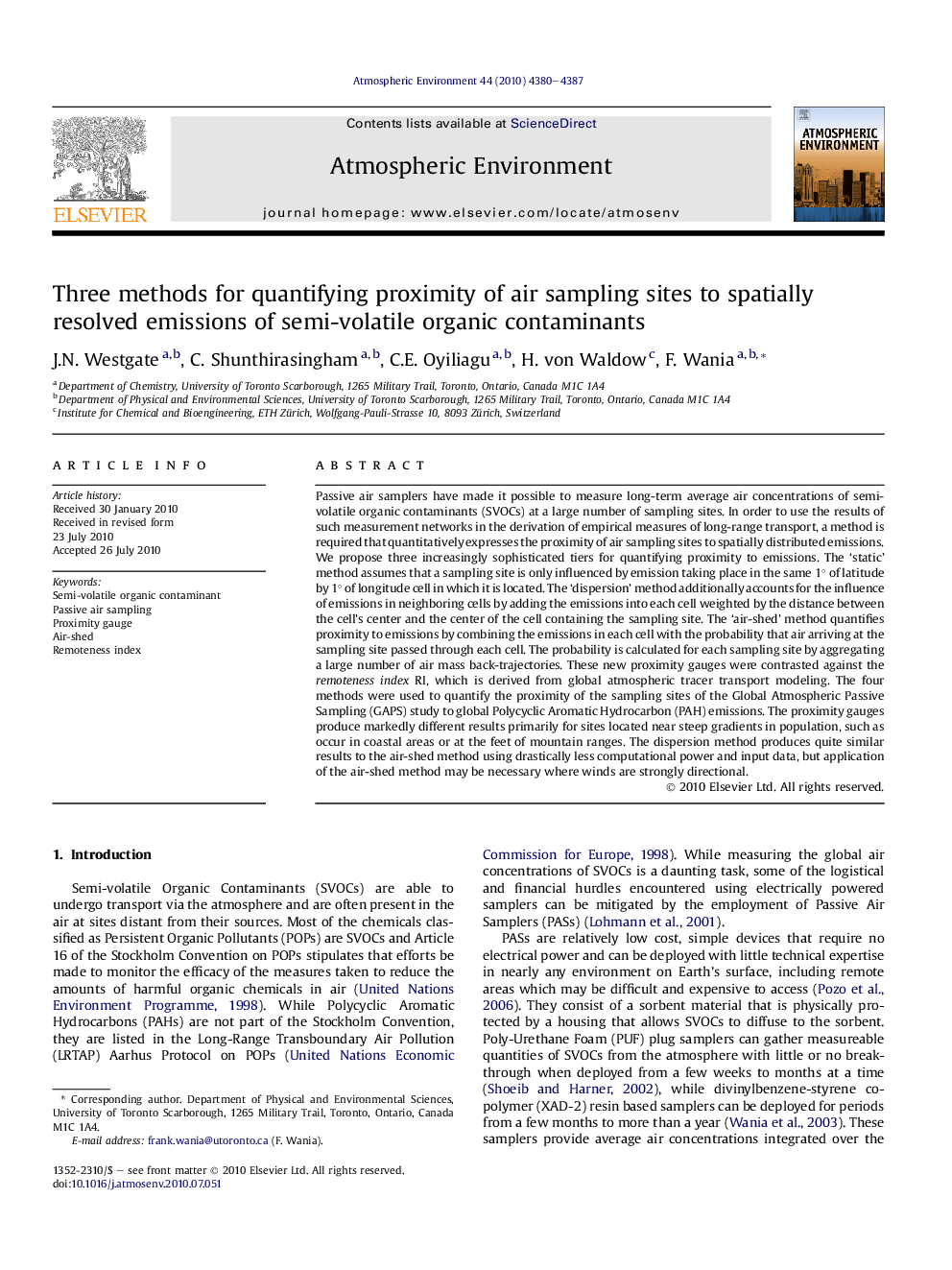| کد مقاله | کد نشریه | سال انتشار | مقاله انگلیسی | نسخه تمام متن |
|---|---|---|---|---|
| 4440418 | 1311059 | 2010 | 8 صفحه PDF | دانلود رایگان |

Passive air samplers have made it possible to measure long-term average air concentrations of semi-volatile organic contaminants (SVOCs) at a large number of sampling sites. In order to use the results of such measurement networks in the derivation of empirical measures of long-range transport, a method is required that quantitatively expresses the proximity of air sampling sites to spatially distributed emissions. We propose three increasingly sophisticated tiers for quantifying proximity to emissions. The ‘static’ method assumes that a sampling site is only influenced by emission taking place in the same 1° of latitude by 1° of longitude cell in which it is located. The ‘dispersion’ method additionally accounts for the influence of emissions in neighboring cells by adding the emissions into each cell weighted by the distance between the cell’s center and the center of the cell containing the sampling site. The ‘air-shed’ method quantifies proximity to emissions by combining the emissions in each cell with the probability that air arriving at the sampling site passed through each cell. The probability is calculated for each sampling site by aggregating a large number of air mass back-trajectories. These new proximity gauges were contrasted against the remoteness index RI, which is derived from global atmospheric tracer transport modeling. The four methods were used to quantify the proximity of the sampling sites of the Global Atmospheric Passive Sampling (GAPS) study to global Polycyclic Aromatic Hydrocarbon (PAH) emissions. The proximity gauges produce markedly different results primarily for sites located near steep gradients in population, such as occur in coastal areas or at the feet of mountain ranges. The dispersion method produces quite similar results to the air-shed method using drastically less computational power and input data, but application of the air-shed method may be necessary where winds are strongly directional.
Journal: Atmospheric Environment - Volume 44, Issue 35, November 2010, Pages 4380–4387